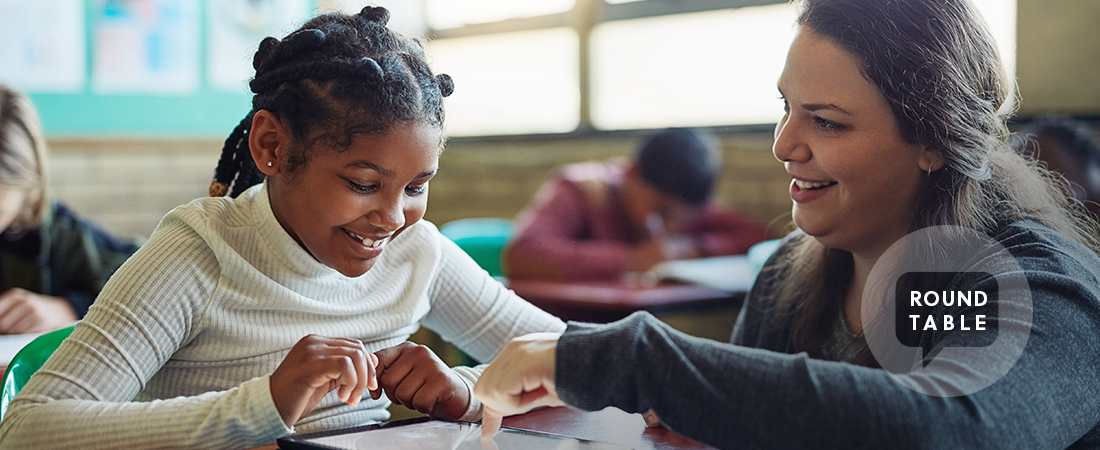Taking Stock of Learning Loss

With the 2020-2021 school year coming to a close, educators are taking stock of a unique year—one in which every aspect of school was affected by a global pandemic. Learning looked different this year. Teaching did, too. And while teachers and students tried their best to adapt, it is undeniable that the pandemic impacted the amount that students learned this year—the consequences of which will last for years to come.
So, how concerned should educators be about learning loss due to the pandemic? In this roundtable conversation, EDC researchers Julie Riordan, Jessica Bailey, and Diana Wogan discuss how difficult it is to quantify learning loss and offer some ideas for how states and districts can help students get back on track.
Q. Is there any way to measure the learning loss that occurred during the pandemic?
Riordan: It’s complicated. Typically you could use test scores to measure how students were doing before and after any event or intervention, but in many cases, tests were not administered last year. Or students didn’t take the test even if they were administered. We also know from existing research that learning is not always well-measured in standardized test scores and should not be used as a sole measure.
Bailey: From what I’ve been reading, educators and researchers are referring to the issue of “lost instructional time” more than “learning loss.” Also, learning loss is a cumulative effect of many different things. So when you’re talking about learning loss in this context, are you talking about just ELA and math skills? Or are you also talking about the social-emotional toll of the pandemic and how that has affected students? It’s very complicated, as Julie said. I think the general consensus, though, is that young students are about three to four months behind just in terms of their reading levels.
Q. How concerned should districts be about the gaps in learning that will undoubtedly show up as a result of last year?
Bailey: Schools are accountable for having students meet grade-level expectations and standards, so I definitely think that they need to be concerned about getting students caught up. But I think many districts are just focused on moving forward. For example, we know from our work on the Region 2 Comprehensive Center that Rhode Island is focused on figuring out ways to accelerate learning and to help kids be ready for present and future learning. They are not going to spend a lot of time on remediation—they are just looking ahead.
Wogan: I think there’s a social and emotional learning piece to this as well. I see schools and districts being cautious about really doubling down on academics to the exclusion of supporting students’ social and emotional needs. Some of the schools I work with focused on fostering relationships and attending to students’ mental health and their sense of belonging during the pandemic. They know they have to build back those personal interactions that were different for students during the pandemic. This work will have to extend into the fall, too.
Riordan: We should also recognize that lost instructional time has impacted some students more substantially. Educators are especially concerned with supporting English learners, students with disabilities, and students from families with fewer resources, including computers and access to the Internet. So to return to the question, I think districts should focus resources to address learning needs in particular for these students.
Q. What is the federal government doing to address lost instructional time and the educational impact of the pandemic?
Bailey: At a high level, all states that receive federal funding through the COVID Relief funds, such as the Elementary and Secondary School Emergency Relief (ESSER) program, are required to offer academic enrichment programs this year to help address learning loss. Diana, what’s happening with the American Rescue Plan?
Wogan: The American Rescue Plan (ARP) has a lot of money to address learning loss. States will receive about $122 billion, with almost $110 billion going directly to school districts. Districts that receive ARP funding will be required to spend 20 percent on addressing learning loss in some way. And of the $12 billion that remain with the state, some of that has to be used to offer evidence-based summer enrichment programs and afterschool programs as well. So as a result of this funding stream, we’re already seeing a lot of states come out with plans for how they’re going to provide things like summer programming and enrichment opportunities for more students.
Q. What are some innovative programs that you are seeing as states and districts begin to receive funding?
Bailey: Rhode Island is using a high-dosage tutoring program to accelerate learning. Research supports that tutoring programs that occur in school three times a week for at least 10 weeks are most effective. Through the Regional Educational Laboratory (REL) Northeast & Islands, EDC is supporting this program in partnership with the Annenberg Institute at Brown University, which developed some of the evidence base behind it. One of the interesting aspects of this work is that the Annenberg Institute has organized a community of practice with six districts, helping them understand the core principles behind high-dosage tutoring and helping them plan their interventions. The REL is helping these districts think through the data that they are going to collect on these programs to make sure that they are making progress towards their goals, such as improving graduation rates.
Q. So what advice do you have for school administrators or policymakers as we approach the next academic year? What are some things they can do to help students both catch up and make progress?
Riordan: We’re hearing about a desire from districts and states to continue innovations that they began out of necessity during the pandemic. Undoubtedly schools are going to be doing things a little differently now than they have in the past. I think the best thing that districts and schools can do is to understand how those new practices are being implemented and how effective they are. We recently published a continuous improvement tool kit, for example, that guides schools through a process of implementing a change and then collecting some proximal data to understand whether this new practice is working as intended. That’s a small, helpful step that every school or district can take.
Bailey: And to connect that to what you were saying before, Julie, I think everybody realizes that “returning to normal” was not working for all students. It definitely wasn’t working for the most vulnerable students. I think that we need to just remember that and not go back to the status quo.
Riordan: Right. In Maine, for example, there is interest on the part of the commissioner and others to understand what innovations were successful during the pandemic, and to identify practices that should be continued—such as spending more time talking with students about what they are learning and less time asking students to memorize—to emphasize quality over quantity.
Wogan: Schools and educators also need some time to figure this out. Right now, it can be overwhelming for educators trying to figure out how to spend the money that is coming their way, while closing out the school year. Whatever practices or strategies schools choose, it will be important to collect some data that will help them understand whether those practices are helping students learn and grow. There’s a lot of urgency to just doing the work that I think it can sometimes be hard to have the space to think about how to do it differently. But if the last year showed us anything, it’s that we have to try.



